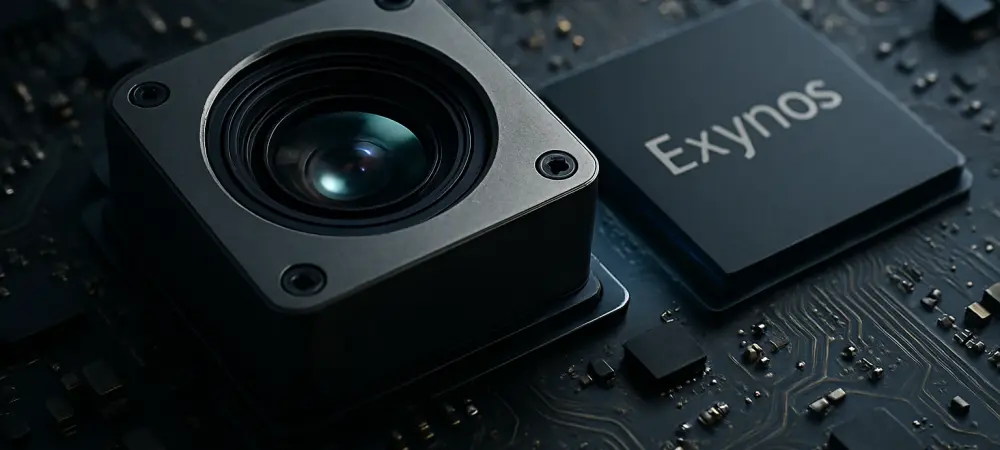As smartphone photography continues to redefine how moments are captured, the anticipation surrounding the Samsung Galaxy S26 series is reaching new heights, particularly with rumors of a groundbreaking chipset at its core. Speculation suggests that the Exynos 2600, expected to debut next year, could introduce unprecedented advancements in camera technology for Samsung’s flagship lineup. This chipset, touted as a potential game-changer, might power models like the Galaxy S26, S26+, and even the S26 Ultra in certain regions. With whispers of enhanced image signal processing capabilities, the excitement lies in whether this technology can truly elevate smartphone imaging to professional levels. The stakes are high, as Samsung aims to address historical performance gaps and redefine expectations in a fiercely competitive market. This discussion delves into the rumored features of the Exynos 2600 and explores the implications for the future of mobile photography.
Exploring the Potential of Exynos 2600
Unveiling Advanced Imaging Capabilities
The buzz around the Exynos 2600 centers on its rumored image signal processor (ISP), which could set a new benchmark for smartphone camera performance. Reports indicate that this chipset, possibly Samsung’s first commercial 2nm chip, might handle extraordinary resolutions, such as processing 320 MP images from a single sensor or managing 108 MP from three sensors simultaneously. Beyond sheer resolution, the ISP is said to support a 14-bit RAW pipeline with 5x frame fusion for high dynamic range imaging, promising vivid and detailed captures even in challenging conditions. Additionally, video capabilities could include 8K recording at 4K60 in HDR10+ or 4K120, alongside burst mode photography at 30 frames per second in 108 MP RAW quality. These features suggest a leap forward in delivering professional-grade imaging, potentially transforming how users document their world through the Galaxy S26 series.
Enhancing Stability and Efficiency
Beyond raw power, the Exynos 2600 is speculated to bring significant improvements in stabilization and energy efficiency, critical factors for sustained camera use. Rumors point to hybrid optical image stabilization paired with AI-enhanced electronic stabilization, which could minimize blur and ensure smooth footage during dynamic shooting scenarios. Furthermore, super-resolution zoom and AI-based scene segmentation are said to be part of the package, offering sharper details and intelligent framing adjustments. A standout claim is the ISP’s 30% increase in power efficiency compared to its predecessor, the Exynos 2400, which could translate to longer battery life during intensive photography sessions. With an estimated bandwidth of 1.8 TB/s between the ISP and neural processing unit, the chipset appears poised to manage complex tasks without overheating, addressing long-standing concerns about performance under pressure in Samsung’s chip designs.
Addressing Historical Challenges and Market Impact
Bridging the Performance Gap
Historically, Samsung’s Exynos chipsets have faced criticism when compared to Snapdragon variants, especially in camera performance for devices like the Galaxy S22 Ultra, where low-light video quality often lagged behind. The Exynos 2600, however, is rumored to mark a turning point with a completely redesigned ISP and neural processing unit pipeline. This overhaul could finally close the gap, offering efficiency and reduced heat generation alongside imaging capabilities that rival even console-quality gaming experiences. If these speculations hold true, the chipset might not only improve photo and video output but also restore confidence in Exynos-powered devices across regions where they dominate, such as Europe. This potential shift could reignite interest in detailed comparisons between Snapdragon and Exynos models among tech enthusiasts, a topic that has long fueled debates in the community.
Navigating Speculation and Credibility
While the rumored features of the Exynos 2600 paint an exciting picture, a note of caution is warranted due to the questionable credibility of the information source. The leaker behind these claims has a history of unverified assertions, casting doubt on the accuracy of the leaked specifications for the Galaxy S26 series. This uncertainty underscores the importance of approaching such reports with skepticism, even as they generate significant buzz. Balancing the allure of cutting-edge camera technology with the need for verified data remains crucial, as premature excitement could lead to misplaced expectations. Until official announcements or reliable confirmations emerge, the discussion around the Exynos 2600 should be viewed as speculative, with an emphasis on the broader implications for Samsung’s strategy rather than definitive conclusions about its capabilities.
Reflecting on a Path Forward
Lessons from Speculative Innovation
Looking back, the speculation surrounding the Exynos 2600 offered a glimpse into Samsung’s potential direction with the Galaxy S26 series, stirring both excitement and caution among industry observers. The rumored advancements in image processing, from high-resolution capabilities to enhanced stabilization, hinted at a transformative leap in smartphone photography that captivated imaginations. Even as doubts lingered due to the unverified nature of the leaks, the discussions sparked by these claims highlighted Samsung’s persistent drive to innovate in a competitive space. The historical context of Exynos versus Snapdragon performance added depth to the narrative, reminding stakeholders of the challenges Samsung navigated in its chipset journey.
Future Steps for Validation and Impact
Moving forward, the focus shifts to the need for concrete evidence and official validation of the Exynos 2600’s rumored features. Industry watchers anticipate detailed announcements or hands-on demonstrations to confirm whether the chipset can deliver on its speculated promise of revolutionizing camera technology. Beyond technical specifications, attention turns to how Samsung might leverage such advancements to strengthen its market position, particularly in regions reliant on Exynos variants. The potential to redefine user experiences through improved imaging and efficiency remains a compelling prospect, urging a closer examination of upcoming developments. As the tech community awaits clarity, the conversation around this chipset underscores the importance of balancing innovation with accountability in shaping the future of mobile technology.

